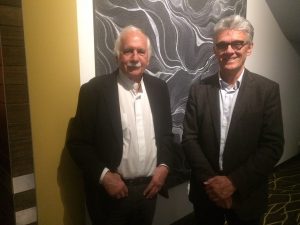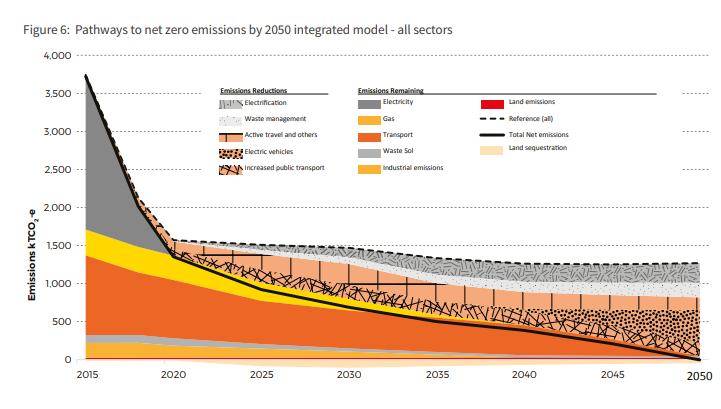Leanne and I attended our regular meeting with Minister Mick Gentleman. Discussion points included:
- the ACT Government’s Housing Choices Demonstration Project EOI aimed at finding organisations capable of delivering alternative housing solutions that address the missing middle. (Interestingly, at the above-mentioned industry heads meeting, there seemed to be a distinct lack of interest in this initiative).
- The Collaboration Hub which I wrote at length about last month.
- I raised the problems with the over-the-top TCCS regulations particularly in relation to multi-unit developments. The Minister reported that meetings are being held between the Planning and TCCS heads to find meaningful improvements.
- The Minister referred to a recent tour of housing developments in the US and Europe. The take home message was that traditional parking requirements are being challenged with the advent of shared and autonomous vehicles.
The Chapter hosted representatives from ACT Procurement to update us on the Government’s latest procurement methods and contractual arrangements and I’m sad to say that the news is less than positive. Architects will be engaged to prepare initial concepts and may be asked to take the work to the next stage but more likely, it will be handed to a construction company to value manage the project with or without the original architect. Original architects will not be novated with the selection of the consultant teams entirely in the hands of the builder, regardless of the consultant’s particular skill or appropriateness. There may be a glimmer of hope, however, according to Richard Kirk, immediate past national president, with the recent release of the Sheargold Weir Report but more of this in future newsletters. https://industry.gov.au/industry/IndustrySectors/buildingandconstruction/Documents/Shergold-and-Weir-Report—BMF-Expert-Assessment.pdf
And so to the National Council Meeting and the National Conference on the Gold Coast. The Council meeting was the first for our new National President, Clare Cousins. It was held over a single day instead of the usual two as many of the Councillors and staff members had just returned from the Venice Biennale. Some of the more interesting matters discussed included:
- Ongoing review of the Institute’s membership – cost, categories, A+ membership, academic and government members. The Institute represents 58% of all registered architects – if this can be increased to 70% we can more convincingly call ourselves the profession’s peak body.
- Architecture Awards review – of particular interest to the ACT Chapter is the topic of state boundaries – do we continue to accept entries located in NSW and if so, what are the geographic boundaries?
- Building contracts, banks and deposits. This is becoming an intractable problem with no easy fix unless the building industry as a whole can convince the banks that this is an issue ultimately hurting the consumer.
- Digital transformation of the Institute. The whole of the Institute’s operation is going digital. The first step was the recent release of the updated Acumen web site.
- Have you accessed Acumen and if so, how have you found it?
- Is it comprehensive and easier to use as the previous version?
- Do you use the EDG resource and if so, how much of it remains relevant given that many of the entries are quite old?
- Do you think the EDG files should be a stand-alone resource or part of the Acumen site?
I would appreciate your feedback on these questions.
The National Conference was held over two days immediately after the National Council meeting and featured local and overseas speakers. I could only attend one day but it was a rewarding experience from a professional and social perspective. However, the presentations were rather too repetitive with lots of mega developments in Asia. There were no Q and A sessions either which was an unusual approach by the creative directors. For me, the highlights were presentations by Sue Dugdale working out of Alice Springs and Spanish architect Borja Ferrater.
Moshe Safdie was Thursday’s keynote speaker who I managed to “interview” that evening. I asked him about Habitat 67 and how his Master’s thesis project evolved into Montreal’s vast and iconic public housing project on the St Lawrence River. He explained it as a fairy tale. After graduation, and while working for Louis Kahn, he was asked to master plan the Montreal Expo. He agreed on the proviso that his “project” be built as part of Expo 67 and to his surprise, the organisers agreed saying that the work had to be done in his own time.
I asked Moshe what are the challenges facing architects nowadays?
He said, “…It is to break away from the mould and to deal with issues to which there is a fair amount of resistance. I find the biggest resistance particularly when it comes to the public realm is the inclination of developers to follow formula. I think public opinion is moving away from that formula. But it is a tough struggle to maintain some form of openness, some extravertedness and connectivity to make these spaces more public.”
During his keynote, Moshe gave an example of the ‘formula’ including skyscrapers on podiums enclosing privately controlled malls.
We have a new executive director, Liz Lang, replacing Leanne Hardwicke who has moved to the national office in charge of policy. I want to thank Leanne for her wonderful contribution to the ACT Chapter particularly and more broadly for her work at National level. Leanne has supported and guided me in my role as Chapter President for which I am indebted. Thank you Leanne.
Liz and I had a couple of long chats in Queensland and I am pleased to find that she is full of ideas for the Chapter and the presidency. To that end, it was Liz who lined-up Moshe Safdie for an interview with me which he kindly accepted.

Image: Moshe Safdie and Philip Leeson



 Yvette Breytenbach RAIA
President, Tasmanian Chapter,
Australian Institute of Architects
Yvette Breytenbach RAIA
President, Tasmanian Chapter,
Australian Institute of Architects